

Dynasty Warriors: Origins was provided by Koei Tecmo for review. Thank you!
There are tons of amazing games constantly releasing, and sometimes it can feel overwhelming, but we all have one game that we keep returning to that just hits the right mark each time. For me, that's the Dynasty Warrior series. The mindlessly fun 1 versus 1000 combat and progression systems are just deep enough to feel enjoyable after hours and hours of playing but still simple enough not to think much about it. I call it my guilty pleasure since I can always come to it just to get away and have a blast without thinking too much. All of the entries in the series are very similar, but Dynasty Warriors: Origins changes up the formula in ways I didn't know I wanted.
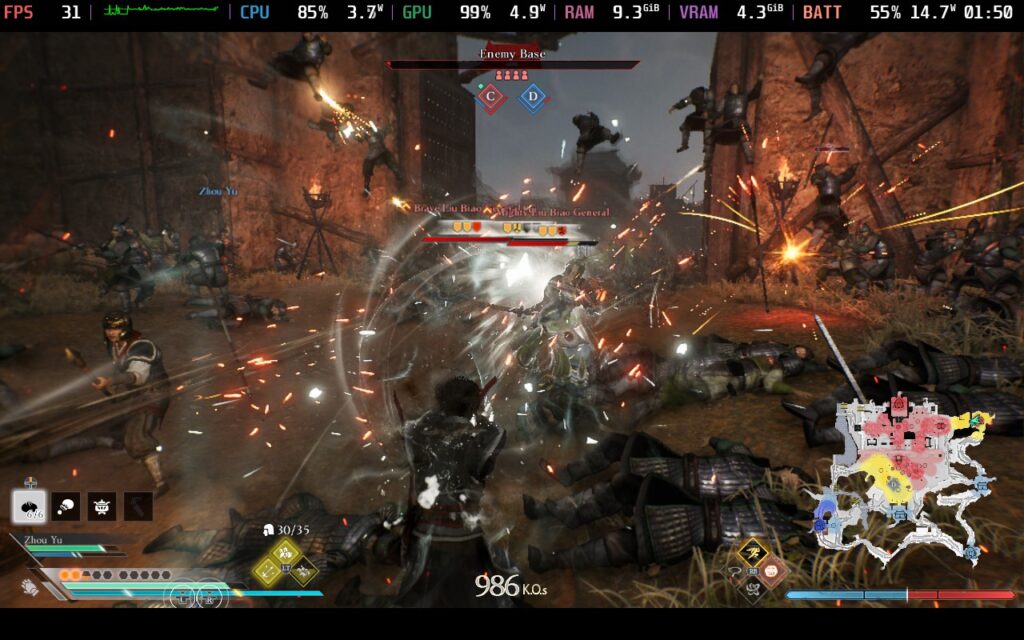
Instead of following directly in its predecessor's footsteps, Dynasty Warriors: Origins leans more into a JRPG-esque style than the past games, which never went that deep. We do have the Empire spinoffs that lean more into strategy, while the mainline series is focused on battles quickly and demolishing huge armies as one of the over 60+ unique characters you could choose from. I was a little bit worried at first since being able to choose from a variety of characters with different weapons and move sets was one of the ways that kept the original games from feeling stale, but after playing Origins, I realized that fear was unfounded.
You play as a silent Nameless Warrior, later nicknamed Zilhuan, who has completely forgotten his past. In the process of figuring it out, you get sucked into an ongoing dispute that ripples across China. As you travel across the country, partaking in battles to help the people of the land, you will meet and fight with, or against, legendary figures to hopefully one day bring peace back.
That is essentially the basics of the story you will be playing through, but since this is a JRPG, I am omitting as much detail as possible to avoid revealing any spoilers. However, if you have played Dynasty Warriors before, you will find the story very familiar. The games are based on the prominent Chinese novel Romance of the Three Kingdoms, which depicts a period of history in China between AD 169 and 280.
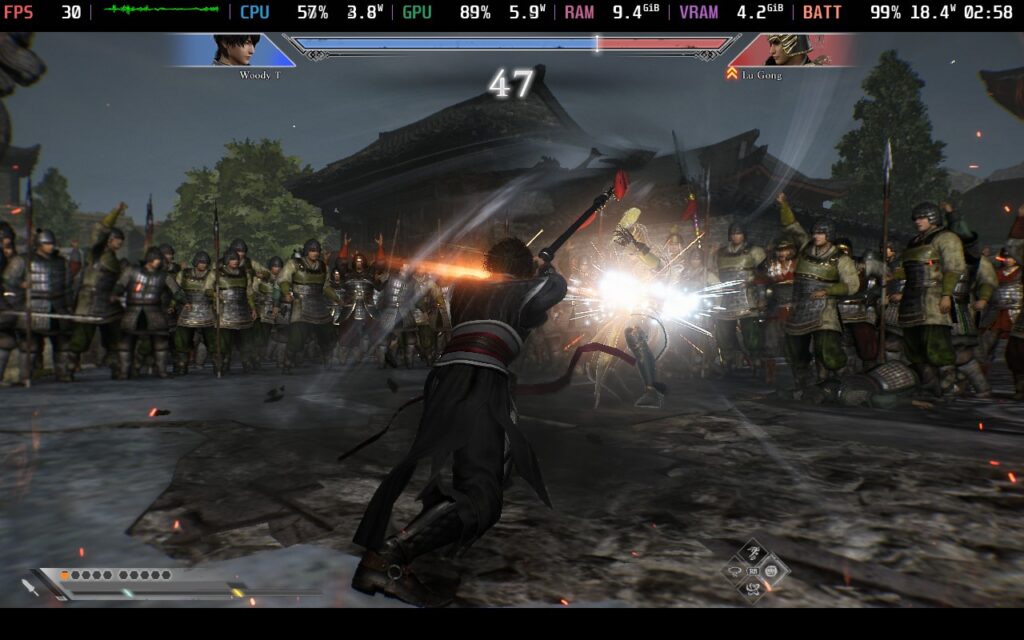
While I have experienced this story many times before, seeing this new side of the tale was interesting. There are more offhand discussions about what's going on and more opportunities to learn more about each of the iconic warriors that appear. It is interesting to see their power dynamics and interpersonal struggles with each other and what leads to the establishment of the Three Kingdoms up close. I also do appreciate the voice acting, although it definitely could use some improvement.
The two areas I think Dynasty Warriors: Origins could have improved on here are Zilhuan's backstory and the way individuals talk to each other. I do like the perspective of being someone who isn't one of the important characters and plays a side role in the battles and events, but I wasn't as invested in Zilhuan's missing memories. Even after discovering who he was, I didn't care. I wish Koei Tecmo spent a little more time fleshing it out. I could see it being more interesting if it had the time.
I also found how everyone talks to Zilhuan to be slightly ridiculous. I can understand that huge battles can bond people through shared trauma. Still, there were too many times random people would meet Zilhuan for the first time and immediately open up with their biggest insecurities or tell him they felt like they could truly be themselves with him. It just feels like they barely know the guy, yet feel somehow comfortable enough to spill all of their secrets or be a little too open. It just ended up not feeling natural when they would interact one-on-one. I did enjoy the moments when they were in groups, all talking about battles and what to do next, but individual discussions could teeter towards weirdness.
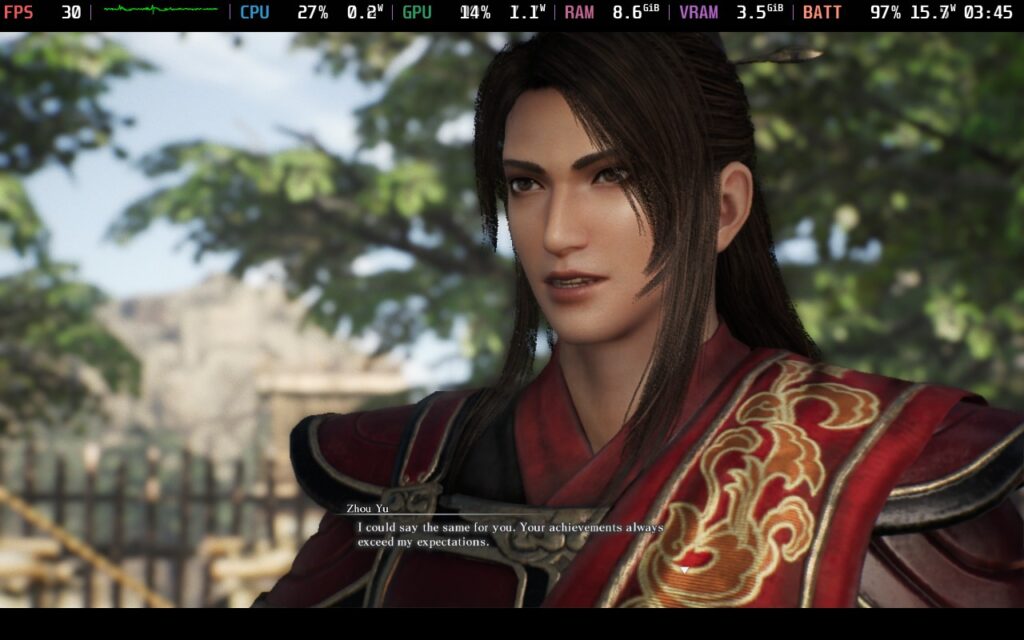
There are ways to increase your bond with some of the warriors as you continue playing, which will have you sometimes completing side quests for them, doing certain actions when in combat, or just finding them on the map to talk to them. Many of these will unlock more one-on-one conversations that dive deeper into their feelings and who they are as people. As outlined above, this can sometimes be a hit or miss.
Luckily, the iconic 1 vs. 1000 gameplay is back and sports some wonderful new improvements. You will be running around a semi-open map where you will fight off against thousands of grunts and more powerful officers, all to complete the victory conditions to win the battle. This will generally mean either killing the enemy commander or helping your commander escape, but to do so, you will have to plow through tons of enemies. Unlike past titles, some big differences keep the gameplay fresh.
Instead of running around the map with one singular weapon and move set, Zilhuan can utilize eight different weapons you can switch out whenever you'd like. Each weapon has weak and strong moves that you can turn into combos and special skills called Arts that are especially powerful. You can equip four different Arts at any given time, and they use their energy system called "Bravery," which replenishes as you attack people. And you still have Musou attacks, which are ultimate moves to dispatch large groups of enemies, and this can be upgraded to do more damage and destroy a larger area of enemies, with some killing off over 500-600 at once.
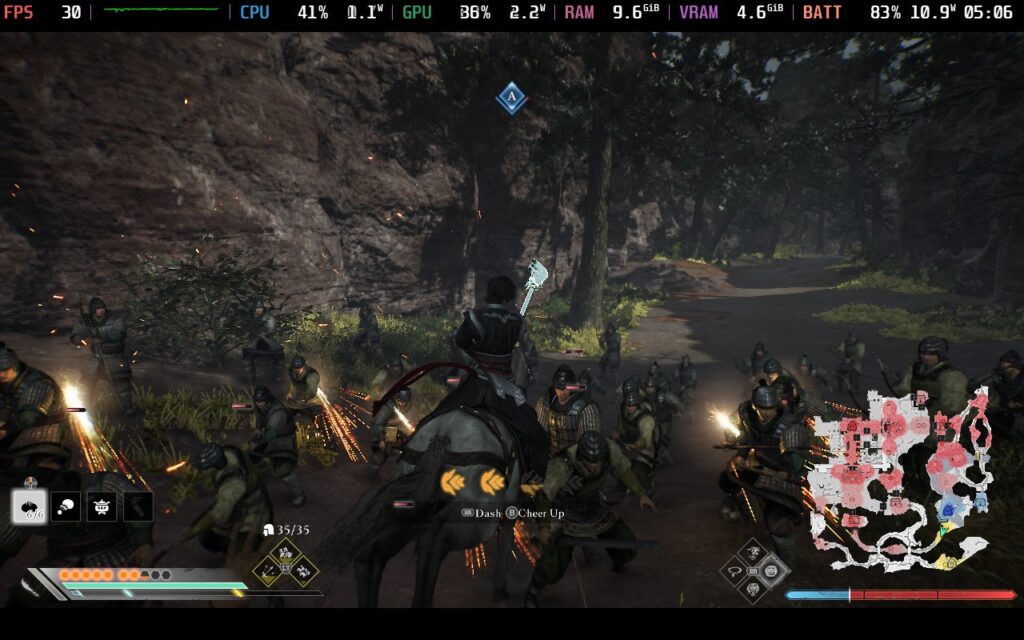
As you continue to play, you will also start getting your army of troops to follow you into battle, allowing you to use Tactics. These Tactics can vary, including commanding your army to shoot a volley of fire arrows at a point you determine, sending them to protect a specific officer on your team, or riding in on a horse to charge at the enemy's army. Some of these can also become Grand Tactics if you perform them a certain way, demoralizing the enemy and making the officers easier to kill. Your allied commanders may also set up Grand Tactics to either charge into an enemy's main large force or perform a huge attack to break up that force.
The commanders and officers you fight are more difficult to defeat, and you will have to use a combination of attacking and parrying their moves to gain the upper hand and break their defenses. You may also duel one-on-one, a returning feature from the previous games. There will also be bases to capture, and you will do so by defeating a set amount of enemies and any officers stationed there.
I found myself running around a bit to make sure some of my officers didn't die so I could win the fight. Going near them replenishes some of their health if they are low. You also have a Morale bar that goes up as you defeat officers, capture bases, and kill tons of fodder enemies. The higher the bar, the higher the chance your allies will win their fights and not need as much help.

These elements combined help make each battle feel enjoyable, and it doesn't get stale. Even though there is a set path you can take to follow along with the story in each battle, I never felt compelled to follow it completely. Zilhuan is set up to be a free agent, so you have full control over how you accomplish those goals in almost every battle.
Some of Dynasty Warriors: Origins' battles may ask you to take an optional partner that you can swap to after some time, so controlling some well-known warriors for a limited time was nice. When swapping, you gain access to that character's moves and abilities that can devastate even larger swaths of foes. Swapping to them can easily turn the tide of battle with the right timing.
Outside of these bigger battles, you will roam around on a big map to head to spots to continue the story, but there is also some nice side content. If you don't want to invest the time into a massive battle, there are two types of smaller fights you can take part in: Skirmishes (smallest) and Missions (medium-sized). Skirmishes take around 1-3 minutes, depending on how you play, getting you currency and increasing peace within the region. Missions are a bit bigger, but they usually give some items or accessories and extra peace to the region. Every region has a peace meter that can be filled in three waves, giving you bonus collectibles, currency, and horses.
I enjoyed this nice change of pace from the constant large battles. I love the Dynasty Warriors formula, but the smaller fights were the perfect size for a 5-minute break I take while writing. I wish the peace meter went up faster with Skirmishes, but I understand why due to how frequently you can find them. The currency can be used to purchase weapons from the inn in any city, though I found so many weapons from fights that I rarely bought them.
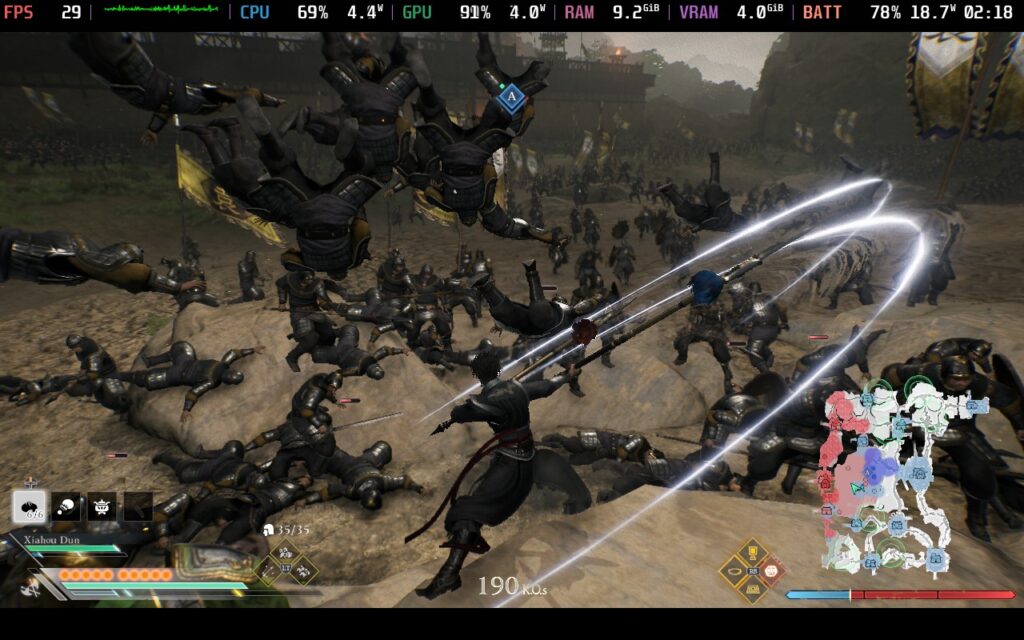
Thanks to the progression, I also changed how I played quite often. Dynasty Warriors: Origins doesn't have a traditional leveling system; instead, you rank up the more you use your different weapon types. It wonderfully encouraged me to change out weapons often. Each weapon will gain Proficiency points the more you use them, which will rank you up and give you access to new abilities, Arts, and attacks for that specific weapon. The ranks will give you more health, attack, defense, and sometimes extra Bravery and new skills to acquire on your Skill Tree.
There are several ways to get skill points to redeem skills on your tree. You get 3 skill points for every 100 kills, completing in-combat action quests you get from officers when bonding and defeating certain commanders and officers in battle. The skills vary but usually consist of boosting your stats, upgrading some attacks you already know, or giving you new abilities to use. It is a bit slow initially to get skill points, but it will get progressively easier as you progress the story.
On top of Arts, you can also equip different accessories, horses, and gems to enhance your character further. You will also pick up new weapons with higher attack power and different traits, so you can get some bonuses against fighting some officers or using certain attacks. There isn't much you can do with your weapons other than equip them, but once you beat the game, you can do more with them. There are five gems you have, though only one can be equipped at a time, but they can be upgraded by using specific crystals you find across the world map.
Beating the game does give some other new features, as well as allowing you to explore diverging paths in the story you could have explored with different choices. I wish some of these features were accessible within the game's first playthrough, especially the weapon forging, but it's still enjoyable to play leading up to beating the game. It does give some reasons to come back, including needing to do more to get the true ending, so that's a nice plus.
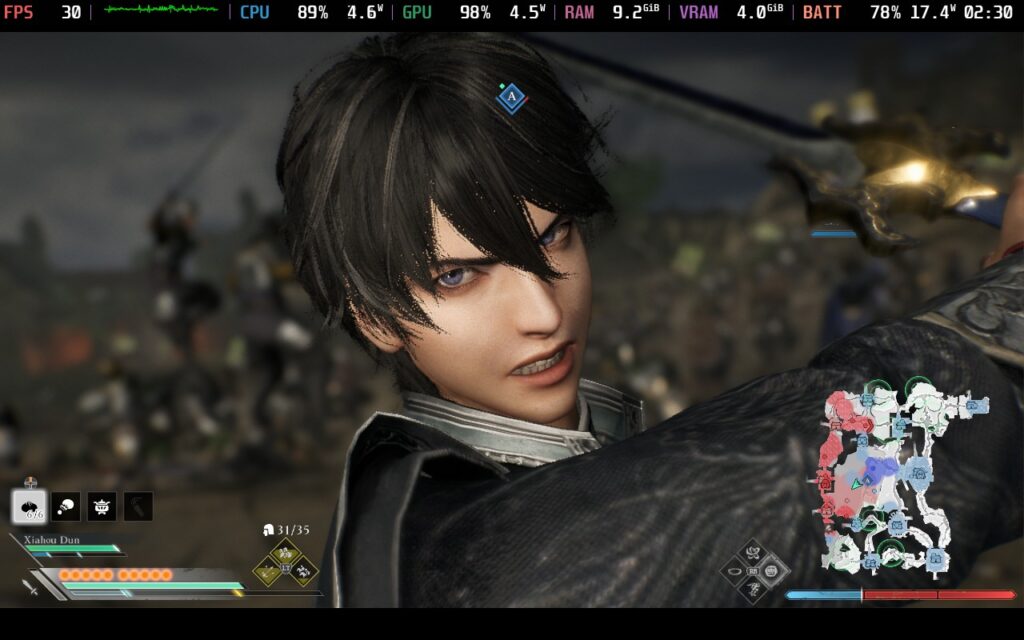
It's also great looking in battles. It's not breaking any boundaries we haven't seen before, but it looks quite nice, even on the lowest settings. Everything looks decently detailed, including the officers, and it's much better than what I have seen in previous entries. The overworld map looks okay, but it does the job. However, I love the battle effects. Getting those massive hits that kill off hundreds of enemies feels so rewarding and has many cinematic moments.
Overall, this has become one of my favorite games in the series. It diverges a lot from the previous entries but still has charm and iconic gameplay. I like the progression features. And to my surprise, it's very playable on the Steam Deck.
Going into Dynasty Warriors: Origins, I worried about how it would run on the Steam Deck. While previous entries of the series are playable, this one looked like it leaned more toward higher fidelity. However, the demo did run decently, so I was hopeful. That hope was not misplaced and is generally playable on the Deck.
I started the game with the default settings, which are all on low without any upscaling, and it held pretty well. Outside of 3-4 different moments in a couple of battles, the game held at 30 FPS the entire time without a TDP limit. There were about 2 moments where the game froze for a second, but otherwise, it was pretty great to see this game so playable without upscaling.
To see if I could mitigate those few moments to get it to 30 FPS, I tried upscaling, but I disliked the results. Almost all of the FSR 3 options had some graphical artifacting or other visual bug, which ruled out using it. Then we have XeSS, which works with no visual problems but gets a bit too blurry without completely fixing the problem. I tested XeSS Ultra Performance in one of the few problem areas I found, and while it does improve the overall framerate by 4-5 frames, it still doesn't hit 30.
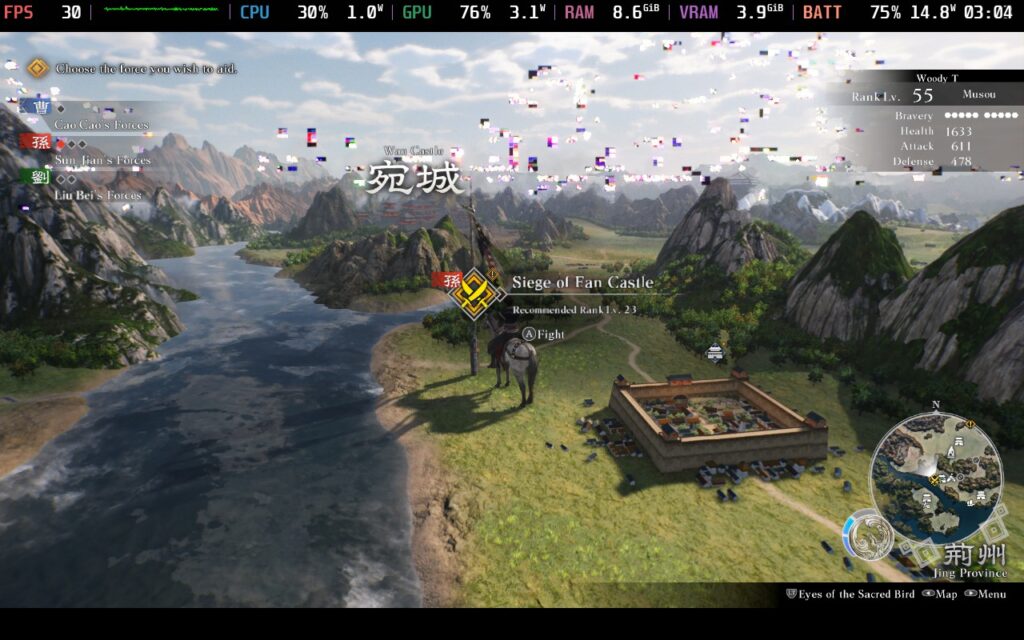
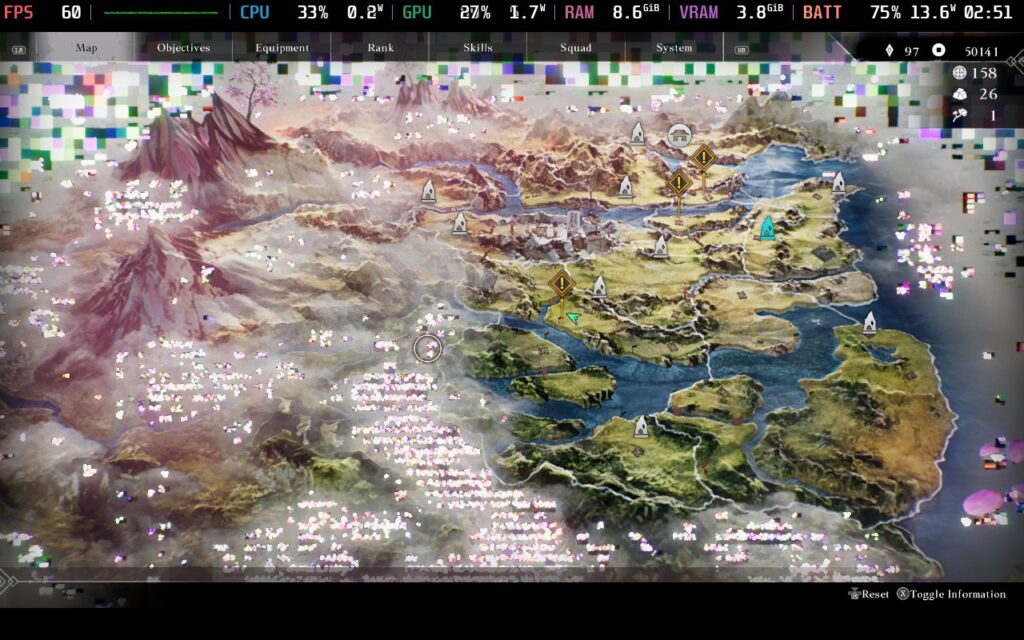
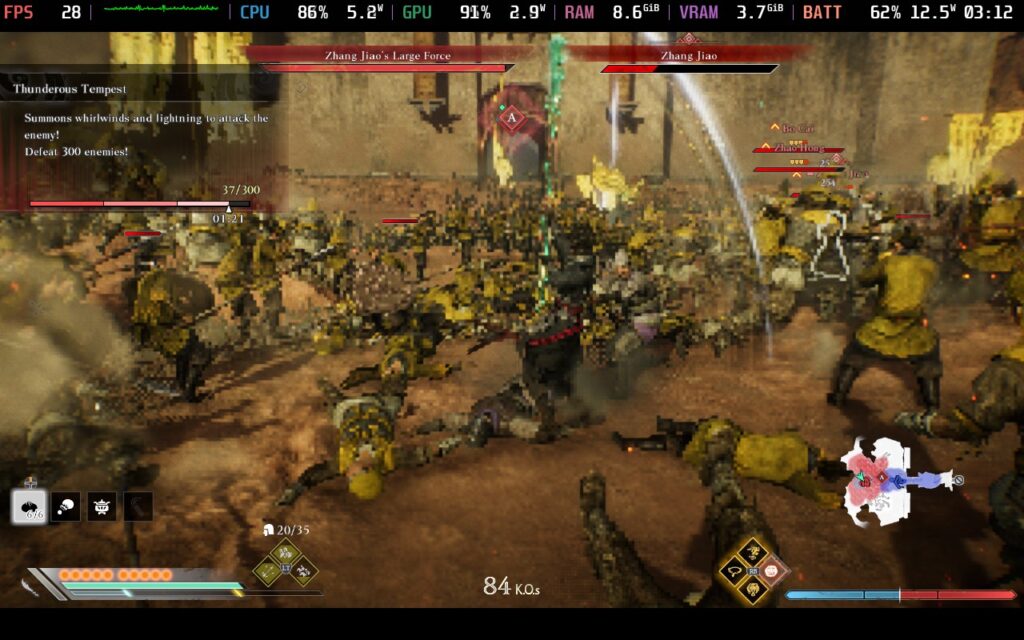
You can change some settings while in-game, but upscalers, resolution, and HDR settings can't be changed unless you are at the main menu, which I found a bit obnoxious.
With how sharp the game looks without using upscaling, I preferred not to use it at all. It did hit performance a little bit more, and it does drain more battery, the game looks fantastic both in combat and up close in cutscenes. I did play around with the settings to see if we could push further, but I noticed more drops than before without huge improvements to how the game looks, so I recommend just keeping everything at the default settings. Turning down settings like View Distance and Volumetric Fog didn't improve the drain much.
I also played around with the TDP limit at these settings to see if we could save on battery. While it does help in some areas, bringing the drain down from 21W to 17W-18W, I noticed more stuttering and 1-second freezes than before. So, to keep the experience as stable as possible, I would say there should be no TDP limit. Without a limit, your battery drain will be somewhere around 16W-20W.
I also tried to see if I could push framerate up, but with how demanding Origins is in combat, it would regularly sit at around 35-36 FPS. Because of this, the most stable way to play is at a 30 FPS lock, which it will default to on the Steam Deck.
I know it doesn't sound as great with needing to keep lower settings, 30 FPS, and high battery drain, but I want to commend Koei Tecmo for still making the game so playable on the Deck. The Steam Deck Preset they made works well and has some extra settings I wouldn't have expected, like Volumetric Fog and a high view distance, which both help a lot visually. This game asks for a minimum NVIDIA GTX 1060, which is on the very high end for the Deck.
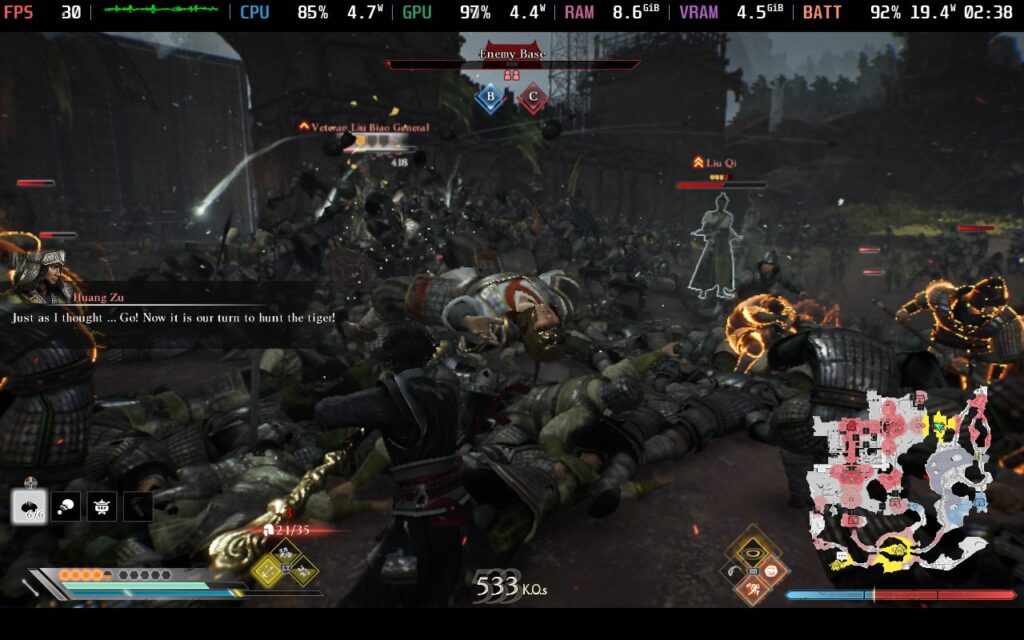
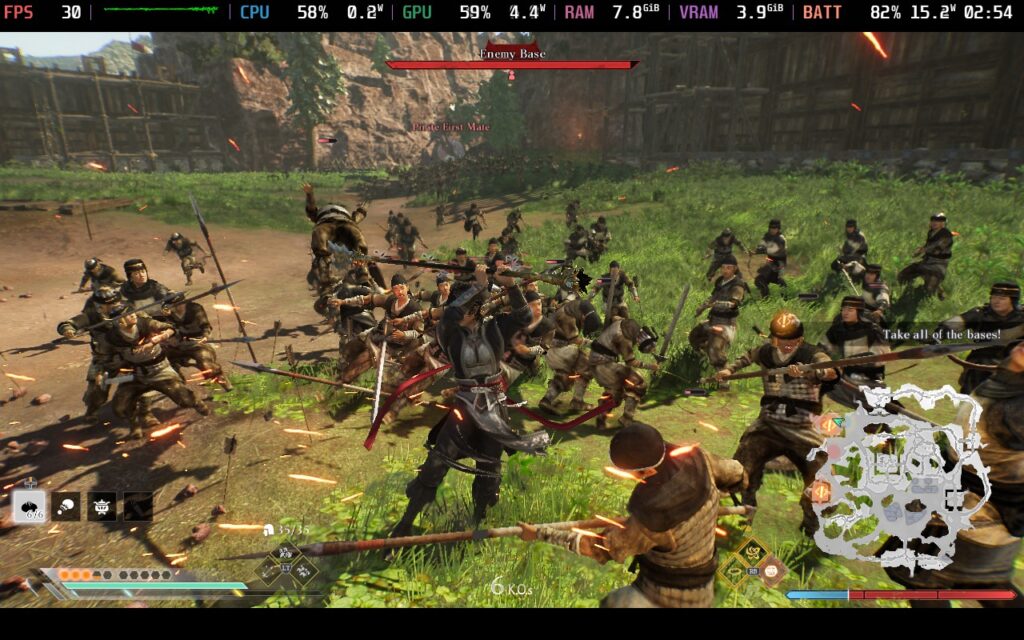
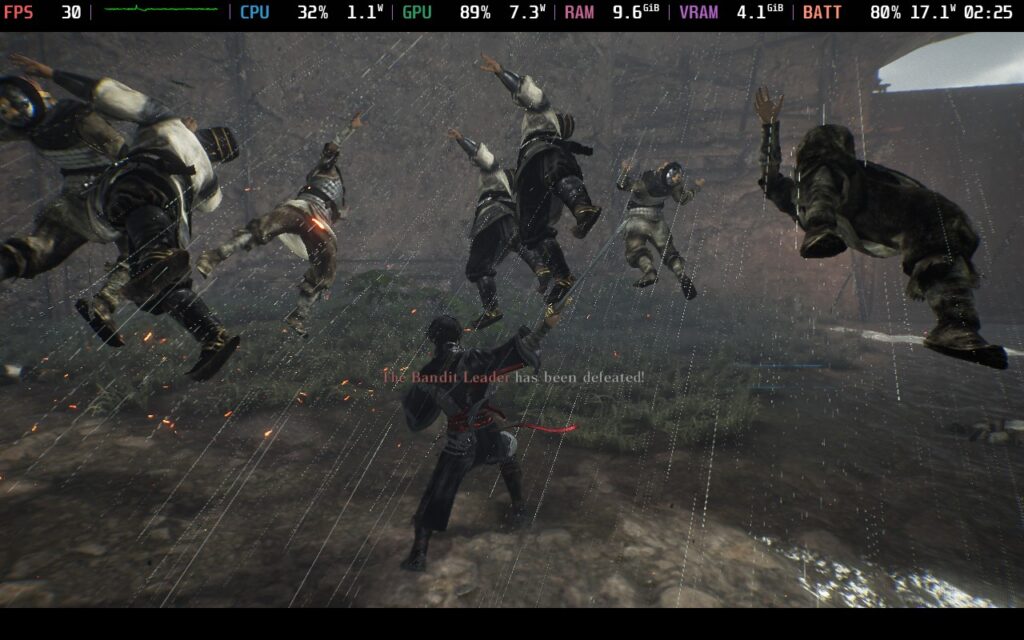
I was playing around with the settings and considering making another group of settings for the Deck to save on battery, but I found there were too many sacrifices to visual quality. XeSS would be needed, and it makes the game too blurry for me to enjoy. It also makes the parts where the game drops before worse, which I didn't like. In the end, there were too many sacrifices that hurt the experience without enough improvements to recommend any other groups of settings.
Valve has rated the game as Steam Deck Playable due to small in-game text, but I didn't find anything that was unreadable.
While in-game, you can change your difficulty, enable battle assistance, auto-use your Meat Buns to heal, change Vibration, invert the camera, change its speed, enable auto lock-on, configure controls, change the text and audio language, and change sound volume.
There is no 16:10 resolution support, so there will be black bars at the top and bottom of the screen, but there are both cloud saves and controller support. There are HDR settings and you can turn them on if you have an OLED Steam Deck.
Dynasty Warriors: Origins grew on me the more I played it, and it quickly became one of my favorite entries in the series. The focus on a singular character was one I didn't expect to enjoy so much, and Koei Tecmo did a great job with the progression system to keep me playing with the variety of weapons instead of just settling on one. The battles are just as intense as ever, and with the new mechanics and more cinematic angles, I was having a blast.
I also appreciate the overworld map with the smaller Skirmishes and other missions, so I didn't have to battle the larger ones all the time. They are great ways to break up the story moments with some solid rewards.
However, I do wish the story revolving around our protagonist's back story was more fleshed out. Some of the mechanics that are locked until you beat the game should really be usable before beating the game, but it does give a good reason to come back and play more.
I was also quite impressed with how well it runs on the Steam Deck. It isn't perfect, but the preset for the settings works quite well, and it doesn't need upscaling, which keeps everything looking sharp. For a game like this, it is essential, and because of the optimization they put in, it's very playable on the go. I love playing this in the palm of my hands, and even with the sacrifices to battery and frame rate, it's still very worthwhile.
Our review is based on the PC version of this game.
If you enjoyed this review, be sure to check out the rest of the content on SteamDeckHQ! We have a wide variety of game reviews and news that are sure to help your gaming experience. Whether you're looking for news, tips and tutorials, game settings and reviews, or just want to stay up-to-date on the latest trends, we've got your back.
Dynasty Warriors: Origins is a fantastic entry in the long-running series, and it is a joy to play on the Steam Deck.
